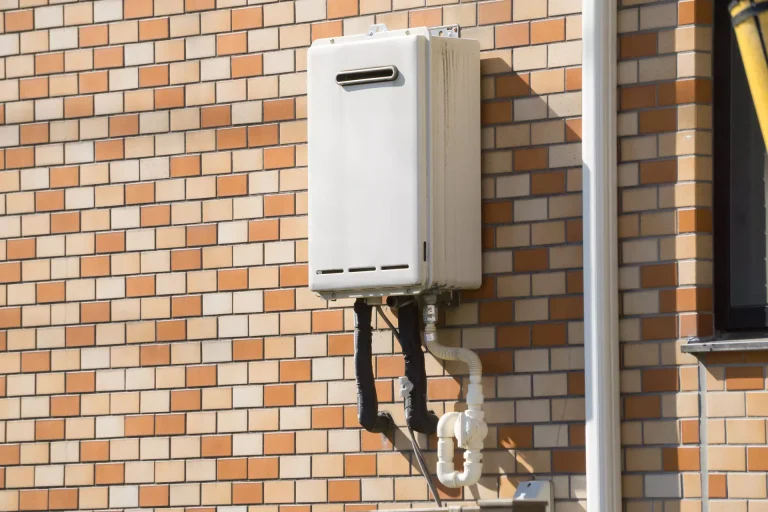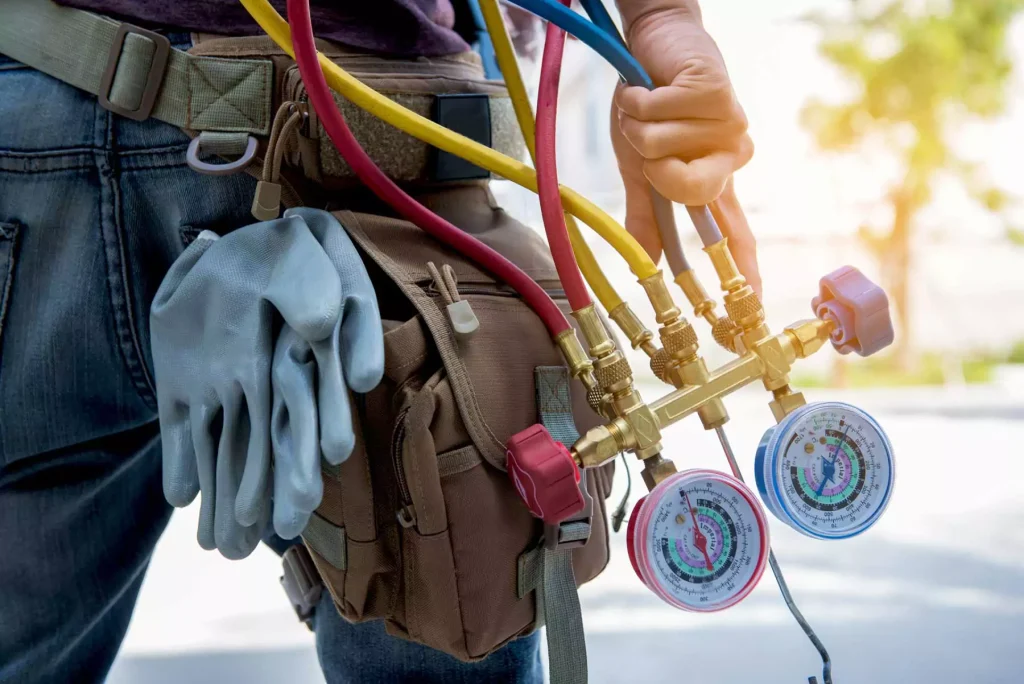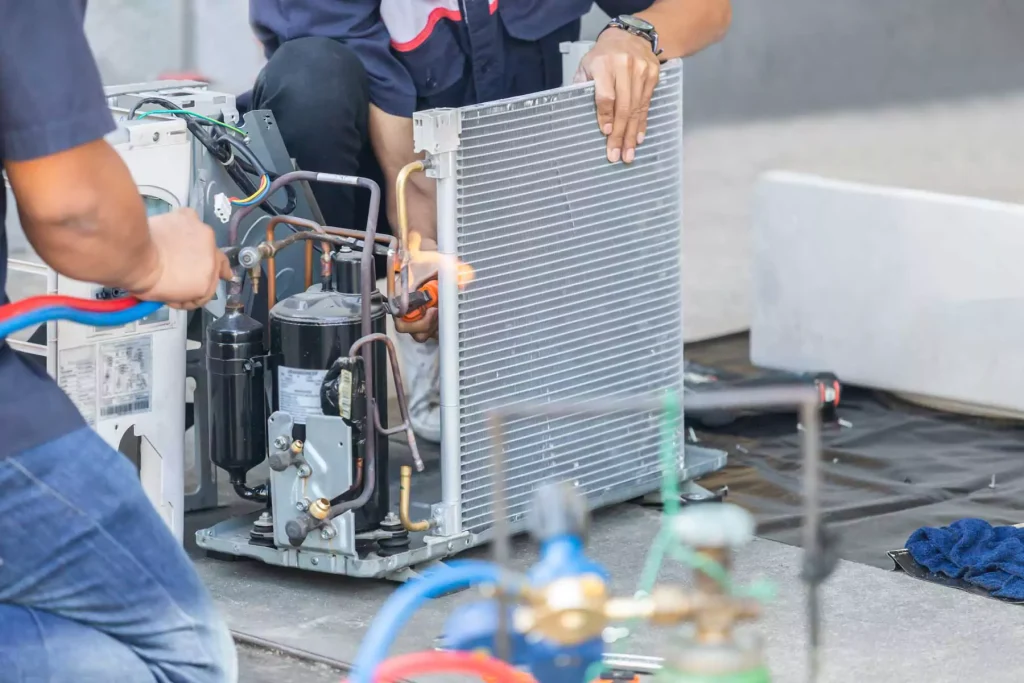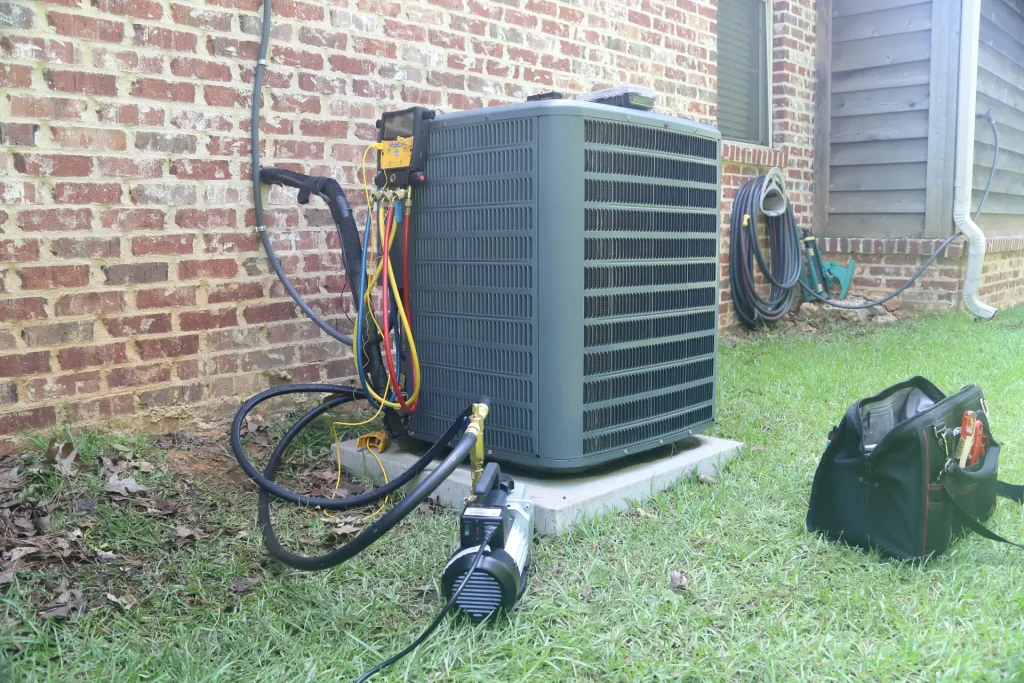Understanding Tankless Water Heater Technology
Tankless water heaters represent a significant advancement in home water heating technology, operating on an entirely different principle than traditional storage tank systems. When you turn on a hot water tap, cold water travels through a pipe into the unit where either a gas burner or electric element heats the water instantly. This on-demand heating process eliminates the need for storing preheated water in a large tank, which continuously consumes energy to maintain temperature even when hot water isn’t being used. The heating elements in these systems activate only when hot water is requested, making them remarkably efficient compared to conventional water heaters that experience standby heat loss throughout the day.
At Kane Heating and Air Conditioning, we’ve expanded our services beyond traditional HVAC systems to include hot water heater work, recognizing that homeowners in Temple, Belton, Harker Heights, TX, and the surrounding areas need comprehensive comfort solutions. The technology behind tankless systems involves sophisticated flow sensors that detect water movement and signal the control board to begin the heating process. Gas models utilize a burner assembly with precise gas valve modulation to achieve the desired temperature, while electric models employ powerful heating elements that can draw between 120 and 160 amps depending on the unit’s capacity. These systems maintain consistent water temperature through advanced thermostatic controls and modulating technology that adjusts the heat output based on flow rate and incoming water temperature.
Energy Efficiency and Cost Savings Analysis
The energy efficiency of tankless water heaters typically ranges from 82% to 98% depending on the model and fuel type, compared to traditional tank heaters that operate at approximately 60% to 80% efficiency. This increased efficiency translates directly into reduced energy consumption, with most households experiencing a 24% to 34% reduction in water heating costs when switching from a conventional storage tank system. Electric tankless units can achieve efficiency ratings up to 99% since virtually all the electrical energy converts directly to heat, though operational costs depend heavily on local electricity rates which average $0.13 per kilowatt-hour nationally.
We offer high quality service at affordable prices and every client gets multiple options to find what benefits them most when selecting a tankless system. The financial analysis extends beyond simple energy savings to include factors such as reduced water waste, lower maintenance costs, and potential utility rebates. Many utility companies offer incentives ranging from $200 to $1,000 for installing qualifying high-efficiency tankless models. Additionally, the absence of a storage tank eliminates the risk of catastrophic tank failure and associated water damage, potentially saving thousands in insurance claims and property damage repairs.
Installation Requirements and Considerations
Installing a tankless water heater involves several technical considerations that differ significantly from traditional tank installations. Gas models require proper venting systems, typically using Category III stainless steel venting materials that can withstand the condensation produced by high-efficiency units. The gas supply line often needs upgrading from a standard half-inch pipe to three-quarter-inch piping to accommodate the higher BTU requirements, which can range from 120,000 to 199,000 BTUs for whole-house units. Electrical requirements for electric tankless units demand substantial amperage capacity, often necessitating electrical panel upgrades to handle the 100 to 150 amp draw required for adequate hot water production.
Sizing and Application Guidelines
Proper sizing of a tankless water heater requires calculating the maximum simultaneous hot water demand in gallons per minute and the temperature rise needed based on incoming groundwater temperature. In Harker Heights, Nolanville, Killeen, Belton, Copperas Cove, and Temple, TX, groundwater temperatures typically range from 50 to 70 degrees Fahrenheit, requiring a temperature rise of 50 to 70 degrees to achieve comfortable shower temperatures. A typical household needs capacity for:
- Shower heads: 2.0 to 2.5 GPM per fixture
- Kitchen faucets: 1.5 to 2.0 GPM
- Bathroom faucets: 0.5 to 1.0 GPM
- Dishwashers: 1.0 to 1.5 GPM
- Washing machines: 1.5 to 2.0 GPM
As a residential heating and air conditioning service, installation and maintenance company, we understand that proper equipment selection ensures optimal performance and customer satisfaction. For larger homes or applications with high simultaneous demand, multiple tankless units can be installed in parallel or dedicated point-of-use units can supplement a primary system.
Maintenance and Longevity Benefits
Tankless water heaters demonstrate exceptional longevity when properly maintained, typically lasting 20 to 25 years compared to 10 to 15 years for traditional tank heaters. Annual maintenance involves descaling the heat exchanger to remove mineral buildup, particularly important in areas with hard water exceeding 7 grains per gallon. The descaling process uses a mild acidic solution circulated through the unit for 45 to 60 minutes, effectively removing calcium and lime deposits that can reduce efficiency and damage components.
Kane Heating and Air Conditioning is more than just an HVAC company – it’s a testament to dedication, community spirit, and a commitment to providing exceptional comfort solutions throughout our service area. We recognize that investing in a tankless water heater represents a significant home improvement decision requiring careful consideration of both immediate needs and long-term benefits.



